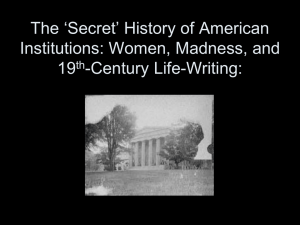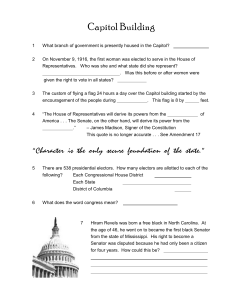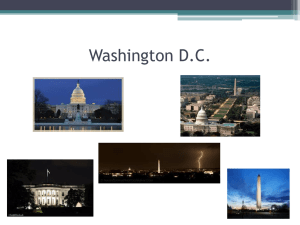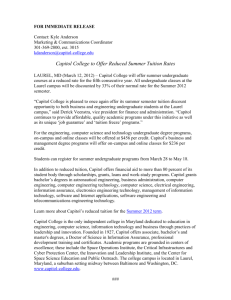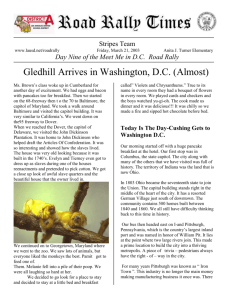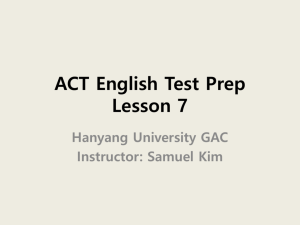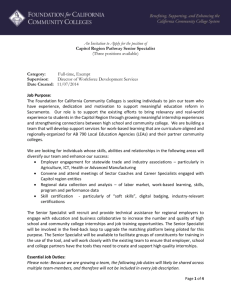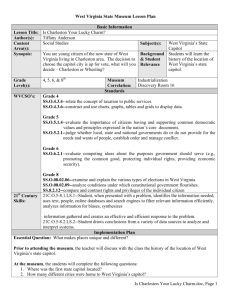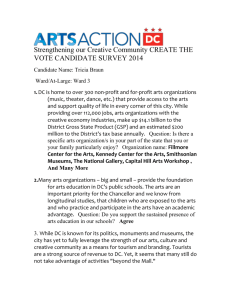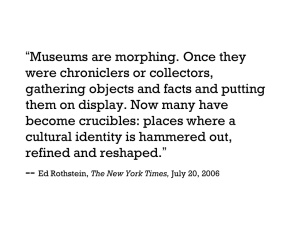Washington, D.C. - North Dakota State University
advertisement
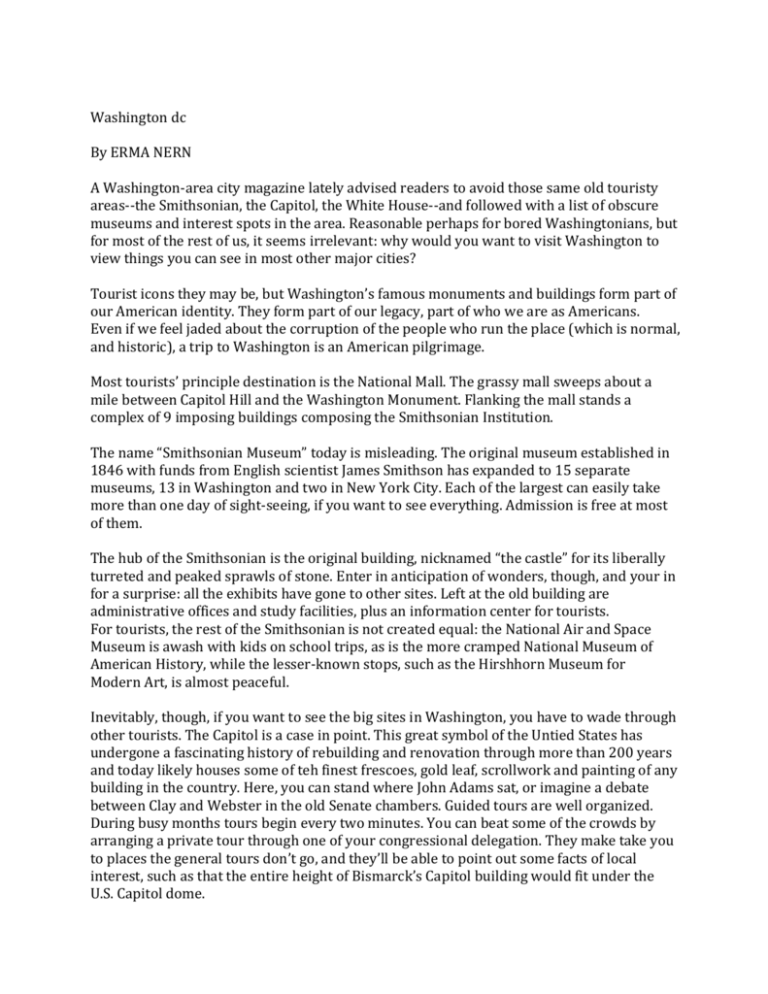
Washington dc By ERMA NERN A Washington-area city magazine lately advised readers to avoid those same old touristy areas--the Smithsonian, the Capitol, the White House--and followed with a list of obscure museums and interest spots in the area. Reasonable perhaps for bored Washingtonians, but for most of the rest of us, it seems irrelevant: why would you want to visit Washington to view things you can see in most other major cities? Tourist icons they may be, but Washington’s famous monuments and buildings form part of our American identity. They form part of our legacy, part of who we are as Americans. Even if we feel jaded about the corruption of the people who run the place (which is normal, and historic), a trip to Washington is an American pilgrimage. Most tourists’ principle destination is the National Mall. The grassy mall sweeps about a mile between Capitol Hill and the Washington Monument. Flanking the mall stands a complex of 9 imposing buildings composing the Smithsonian Institution. The name “Smithsonian Museum” today is misleading. The original museum established in 1846 with funds from English scientist James Smithson has expanded to 15 separate museums, 13 in Washington and two in New York City. Each of the largest can easily take more than one day of sight-seeing, if you want to see everything. Admission is free at most of them. The hub of the Smithsonian is the original building, nicknamed “the castle” for its liberally turreted and peaked sprawls of stone. Enter in anticipation of wonders, though, and your in for a surprise: all the exhibits have gone to other sites. Left at the old building are administrative offices and study facilities, plus an information center for tourists. For tourists, the rest of the Smithsonian is not created equal: the National Air and Space Museum is awash with kids on school trips, as is the more cramped National Museum of American History, while the lesser-known stops, such as the Hirshhorn Museum for Modern Art, is almost peaceful. Inevitably, though, if you want to see the big sites in Washington, you have to wade through other tourists. The Capitol is a case in point. This great symbol of the Untied States has undergone a fascinating history of rebuilding and renovation through more than 200 years and today likely houses some of teh finest frescoes, gold leaf, scrollwork and painting of any building in the country. Here, you can stand where John Adams sat, or imagine a debate between Clay and Webster in the old Senate chambers. Guided tours are well organized. During busy months tours begin every two minutes. You can beat some of the crowds by arranging a private tour through one of your congressional delegation. They make take you to places the general tours don’t go, and they’ll be able to point out some facts of local interest, such as that the entire height of Bismarck’s Capitol building would fit under the U.S. Capitol dome. You may sit in on House or Senate debates, but you need a letter from your congressman or senator for admission. Contact their offices for that, too, and for hard-to-get tickets to a White House tour. Some tourists get to “Congress watch.” It’s a little like bird-watching, and Congressional staff themselves are known to indulge, looking for famous senators or representatives around the Capitol and its office buildings. Theirs a hierarchy here: while someone like Minnesota’s Collin Peterson is hardly worth a murmur, John McCain is a real find. And coming soon…watch for North Dakota’s own Heidi Heitcamp! The best place to watch is in the hallways of the Capitol or office buildings, especially around the little underground train that runs between the Senate and House sides of the Capitol. Anybody can take the train--but you’ll have to go through a metal detector to get into the congressional office buildings. At the opposite end of the mall from the Capitol, past the Washington Monument and in wooded Constitution Gardens on the way to the Lincoln Memorial is the Vietnam Veterans Memorial. Not grandiose and proud, it is simply a set of black stone tablets running about 100 yards, listing 58,183 Americans killed or missing in the war. All of these museums and memorials are in central Washington, within reasonable walking distance of each other. Unfortunately, the efficient Washington subway does not stop near the monuments opposite the Capitol, including the Vietnam Memorial and Lincoln Memorial. Cabs are an alternative, or one of the many Washington bus tours which offer a smorgasbord of sites. However you get around; Washington offers tourists a compact selection of some of America’s most famous people and places. Every believer in democracy should make the pilgrimage at least once.
